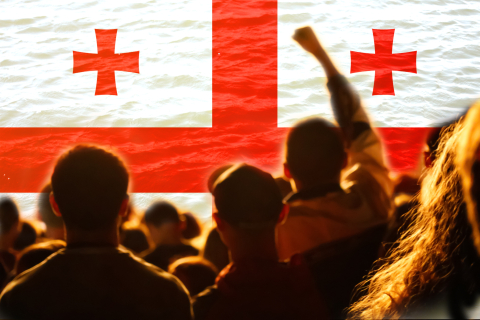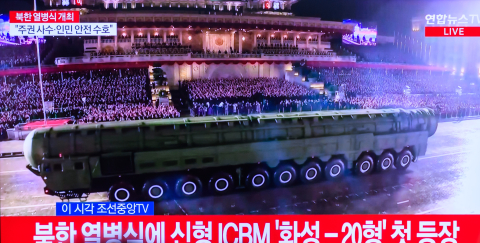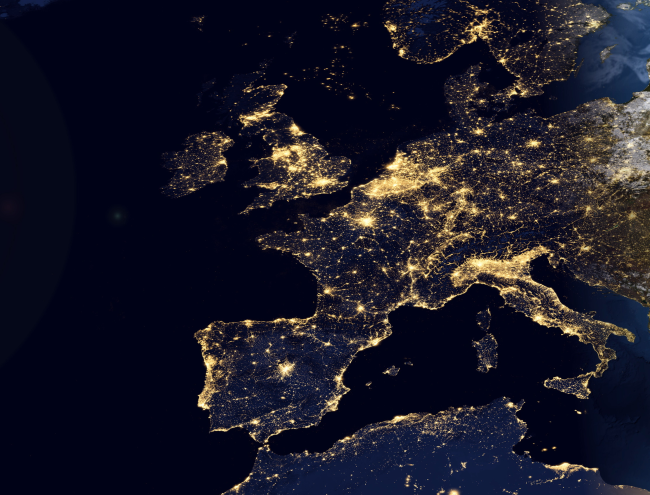The EU ETS - The Big Baby and the Bath Water

The world-wide economic slowdown will reduce global CO2 emissions from man"s economic activity - but only temporarily. Fear that the looming global recession will slow investment in low emitting technologies and delay the fight against climate change seem to be well founded while industry seeks to be profitable, avoid bankruptcy and protect employment as much as possible. Once stronger world economic growth returns, the same challenges will return, but with the passage of time, the need to transform our energy systems will be more pressing than ever.
Despite the European hard winter, the price of European Union Allowances (EUAs) - the European carbon trading contract unit - fell below 10 Euro per ton in February. This with the low prices of oil and gas further eroded incentives toward clean technologies. The economic downturn triggered several factors that may explain why EUAs are losing their value. Most of the companies covered by the European Trading System expect a drop in economic demand which will translate both into lower production - meaning these companies would have too many carbon allowances - and a drop in profits, which may induce them to sell their allowances to raise money. Such sales of permits in January probably created a surplus on the market. Another bullish factor in the European EUA market is driven by low natural gas prices. In 2008, high gas prices incited energy producers to rely on coal therefore prompting these companies to buy allowances to cover extra CO2 emissions, pushing the EUA price up. These days energy producers give priority to gas instead of coal, causing a drop in permits demand.
There should be no surprise that carbon prices react to economics - carbon is after all just another commodity. But even in 2012, as ETS enters its third phase and after 8 years of implementation, the EU ETS will still be in its early stages. Already, opponents of a cap & trade system point to the problems of the EU ETS faults to support their argument. Instead, others should draw from the lessons of the EU ETS to develop a better institutional framework and mechanisms.
Initially, grandfathering seemed a logical allocation methodology. It offered simplicity and an easy transition to a carbon management system. However, phase 1 of the EU ETS demonstrated that grandfathering based on historical emissions was anathema to creating scarcity on the market by setting a cap that reflects a true effort. Moreover, phase 1 (2005-2007) saw companies making windfall profits by passing CO2 costs on to consumers while selling allowances they didn"t need - and that they had received for free. In phase 2 (2008-2012) companies are selling unused allowances - again received for free - in order to raise capital. These distortions make clear the need for some level of auctioning and for a trading horizon that gives permits increasing value over time.
Low carbon prices will inevitably delay investment in lower carbon energy. The design of a cap & trade system should include a price floor, for example by setting a minimum auction price, that will provide more stable investment conditions. Should the EU consider a price floor for the third phase, the value of today"s allowances would begin to reflect that greater value, since investors would have a better outlook of the upcoming period.
The EU ETS has been adopted by 27 countries despite strong differences in energy mixes and climate policies. That is an already impressive achievement and represents years of work and dedication. Despite EU ETS faults, the EU succeeded in setting a constraint and a price on CO2 emissions coming from major economic players and has now an increasingly robust system that could deliver the needed reduction if corrected accordingly.
CO2 emissions from EU ETS installations fell by 3% in 2008 compared to 2007. ((Not very compelling given the economic slippage in last quarter of 2008)) Carbon prices could be responsible for 40% of the fall. True, it is not enough. We believe a cap & trade system remains the most suitable tool to address emissions reductions world wide in comparison with carbon taxation. First, because it is difficult if not impossible to define how large a tax for how much reductions and in which markers. Second, because it is difficult to sell politically Lastly, because China, India and growing Middle Eastern consumers are unlikely to adopt a carbon tax whereas it might be easier to draw them in a global cap & trade system where they could have a comparative advantage. A carbon tax lately seems to be gaining appeal among US conservatives and prominent industrials including Rex Tillerson, CEO of Exxon. One can wonder about the real motivations behind this belated attraction to a policy tool that has little chance to pass in the Congress…or maybe it is just that: it won"t pass. Let"s focus instead on improving existing cap & trade systems and learn from them. The EU ETS, that have been tried for several years now and improves with each phase. There are other trading schemes around the world that can join forces with EU ETS. For now, ETS is the biggest baby in this bath water - lets be sure to put all that work to good use.

Available in:
Regions and themes
Share
Related centers and programs
Discover our other research centers and programsFind out more
Discover all our analysesBrazil One Year Away from the October 2026 General Elections
Brazil’s general elections will be held on October 4, 2026, to elect the president, vice-president, members of the National Congress, governors, deputy governors and state legislative assemblies. For the presidential and gubernatorial elections, a second round will be held on October 25 if no candidate obtains a majority of the votes in the first round.
COP30: An Inflection Point for Climate Action and Governance
The 30th Conference of the Parties (COP30), opening in Belém, Brazil, on November 10th 2025, convenes at a perilous moment.
The Strategic Dimension of Skills in the Clean Industrial Deal
In the competitiveness and energy transition battles, the European Union (EU) must master a determinant factor: skills.
The Energy Transition Faces Geopolitical Challenges. How Can Ideological Divides Be Overcome?
President Trump’s positions and policies, combined with record coal consumption and booming global electricity demand, geo-economic confrontation, and widespread concerns about energy security, are changing the game when it comes to understanding realistic decarbonization trajectories. The war in Europe is intensifying competition between defense and transition budgets. This is also the case elsewhere in the world.











